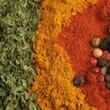Background
- Cumin (Cuminum cyminum) is native to the area from the eastern Mediterranean to eastern India. Traditional cultures have used it both for cooking and healing. Egyptians also used it for mummification. Cumin has been found in ancient sites, including Egyptian archeological sites from the 16th Century BC.
- Persians are thought to be the first people to have cultivated cumin. It continues to be used as a medicinal herb and in cooking throughout the Middle East, North Africa, South Asia, and parts of southern Europe.
- Cumin has been widely credited with a broad range of effects, including increasing urine flow, settling upset stomach, eliminating gas, and improving the symptoms of carpal tunnel syndrome. However, current clinical data supporting the use of cumin are lacking for any human indication.
References
Natural Standard developed the above evidence-based information based on a thorough systematic review of the available scientific articles. For comprehensive information about alternative and complementary therapies on the professional level, go to . Selected references are listed below.
- Allahghadri T, Rasooli I, Owlia P, et al. Antimicrobial property, antioxidant capacity, and cytotoxicity of essential oil from cumin produced in Iran. J Food Sci 2010;75(2):H54-61.
View Abstract - Bettaieb I, Bourgou S, Wannes WA, et al. Essential oils, phenolics, and antioxidant activities of different parts of cumin (Cuminum cyminum L.). J Agric Food Chem 2010;58(19):10410-8.
View Abstract - Bukhari SB, Iqbal S, Bhanger MI. Antioxidant potential of commercially available cumin (Cuminum cyminuml inn) in Pakistan. Int J Food Sci Nutr 2009;60(3):240-7.
View Abstract - Chauhan PS, Satti NK, Suri KA, et al. Stimulatory effects of Cuminum cyminum and flavonoid glycoside on Cyclosporine-A and restraint stress induced immune-suppression in Swiss albino mice. Chem Biol Interact 2010;185(1):66-72.
View Abstract - Derakhshan S, Sattari M, Bigdeli M. Effect of cumin (Cuminum cyminum) seed essential oil on biofilm formation and plasmid Integrity of Klebsiella pneumoniae. Pharmacogn Mag 2010;6(21):57-61.
View Abstract - El-Ghorab AH, Nauman M, Anjum FM, et al. A comparative study on chemical composition and antioxidant activity of ginger (Zingiber officinale) and cumin (Cuminum cyminum). J Agric Food Chem 2010;58(14):8231-7.
View Abstract - Haghparast A, Shams J, Khatibi A, et al. Effects of the fruit essential oil of Cuminum cyminum Linn. (Apiaceae) on acquisition and expression of morphine tolerance and dependence in mice. Neurosci Lett 2008;440(2):134-9.
View Abstract - Hajlaoui H, Mighri H, Noumi E, et al. Chemical composition and biological activities of Tunisian Cuminum cyminum L. essential oil: a high effectiveness against Vibrio spp. strains. Food Chem Toxicol 2010;48(8-9):2186-92.
View Abstract - Jensen-Jarolim E, Leitner A, Hirschwehr R, et al. Characterization of allergens in Apiaceae spices: anise, fennel, coriander and cumin. Clin Exp Allergy 1997;27(11):1299-306.
View Abstract - Katti K, Chanda N, Shukla R, et al. Green Nanotechnology from Cumin Phytochemicals: Generation of Biocompatible Gold Nanoparticles. Int J Green Nanotechnol Biomed 2009;1(1):B39-B52.
View Abstract - Khatibi A, Haghparast A, Shams J, et al. Effects of the fruit essential oil of Cuminum cyminum L. on the acquisition and expression of morphine-induced conditioned place preference in mice. Neurosci Lett 2008;448(1):94-8.
View Abstract - Martinez-Velazquez M, Castillo-Herrera GA, Rosario-Cruz R, et al. Acaricidal effect and chemical composition of essential oils extracted from Cuminum cyminum, Pimenta dioica and Ocimum basilicum against the cattle tick Rhipicephalus (Boophilus) microplus (Acari: Ixodidae). Parasitol Res 2010.
View Abstract - Myer CM 3rd. The evolution of ototopical therapy: from cumin to quinolones. Ear Nose Throat J 2004;83(1 Suppl):9-11.
View Abstract - Pai MB, Prashant GM, Murlikrishna KS, et al. Antifungal efficacy of Punica granatum, Acacia nilotica, Cuminum cyminum and Foeniculum vulgare on Candida albicans: an in vitro study. Indian J Dent Res 2010;21(3):334-6.
View Abstract - Wanner J, Bail S, Jirovetz L, et al. Chemical composition and antimicrobial activity of cumin oil (Cuminum cyminum, Apiaceae). Nat Prod Commun 2010;5(9):1355-8.
View Abstract







